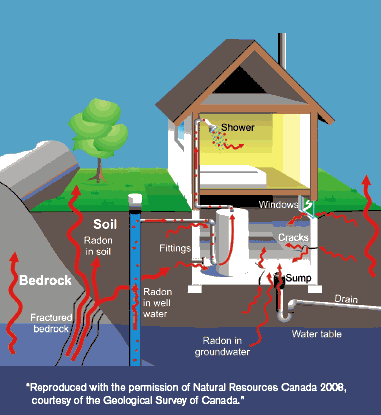United States EPA
Is radon really bad for you?
Breathing radon over time increases your risk of lung cancer. Radon is the second leading cause of lung cancer in the United States. Nationally, the EPA estimates that about 21,000 people die each year from radon-related lung cancer. Only smoking causes more lung cancer deaths.
For that reason, every residence must benefit from radon screening, which is simple, cost-effective, as well as lifesaving, the organization states. Some granite kitchen counters might expose people to different degrees of radon.
Radon in the air is taken into consideration to be a bigger wellness threat than radon in residential water so the US Epa suggestion is to not evaluate for radon in water unless a radon in air examination is over the action level. Nevertheless, some US states, such as Maine where radon levels are more than the national standard, advise all well water should be checked for radon. The US government has not establish an action level for radon in water.
Is radon mitigation really necessary?
When radon gas enters the body, it exposes the lungs to small amounts of radiation. In small quantities, experts say this is harmless. However, in persistent exposures or larger quantities, radon can damage the cells of the lining of the lungs, increasing a person's chance of developing lung cancer.
Radon reduction systems do an outstanding task of keeping radon out. An increasing number of house buyers are seeking homes with radon options in place.
- Radon gas is a naturally-occurring result of the contaminated decay of Uranium in the soil.
- Relying on your geographic area, the radon levels of the air you take a breath beyond your house may be as high as 0.75 pCi/L.
- The national standard of outdoors radon degrees is 0.4 pCi/L and also it is estimated by the National Academy of Sciences that exterior radon degrees trigger approximately 800 of the 21,000 radon generated lung cancer deaths in the US every year.
- The United States EPA has actually placed it plainly, stating, "Any kind of radon direct exposure has some risk of causing lung cancer.
How do you eliminate radon?

Possible symptoms include shortness of breath (difficulty breathing), a new or worsening cough, pain or tightness in the chest, hoarseness, or trouble swallowing. If you smoke and you know you've been exposed to high levels of radon, it's very important to quit smoking.
In the US, approximately 14 states have a state radon programs which train and license radon reduction contractors as well as radon dimension experts. If your state licenses radon specialists call your state health and wellness division, to determine. Without the correct equipment or technical expertise, radon degrees can really increase or create other added expenses and also possible threats. A listing of qualified mitigation company is offered via state radon workplaces, which are detailed on the EPA website at/ radon/whereyoulive. html.
What to Understand about the Dangers of Radon Gas in Your Home
What are the symptoms of radon in your home?
If a person has been exposed to radon, 75 percent of the radon progeny in lungs will become "harmless" lead particles after 44 years. When an alpha particle damages a cell to make it cancerous, the onset of lung cancer takes a minimum of 5 years but most often 15 to 25 years, and even longer.

The carcinogen from radon does not come primarily from radon itself, but rather from the contaminated products created in the degeneration of radon. The basic effects of radon to the body are caused https://writeablog.net/clarusgbls/most-of-radon-related-cancer-cells-fatalities-happen-among-cigarette-smokers by its radioactivity as well as subsequent risk of radiation-induced cancer. Lung cancer cells is the only observed effect of high focus radon exposures; both animal as well as human research studies show that the lung and breathing system are the key targets of radon daughter-induced toxicity. Inevitably, they discovered that the chance of creating lung cancer cells fell listed below one (the no result degree) at radon exposure within the variety of 0-4 picoCuries per litre, according to Science Daily.
How long does it take for radon to cause cancer?
Fact: You will reduce your risk of lung cancer when you reduce radon levels, even if you've lived with an elevated radon level for a long time. Keep in mind that radon levels below 4 pCi/L still pose some risk and that radon levels can be reduced to 2 pCi/L or below in most homes.